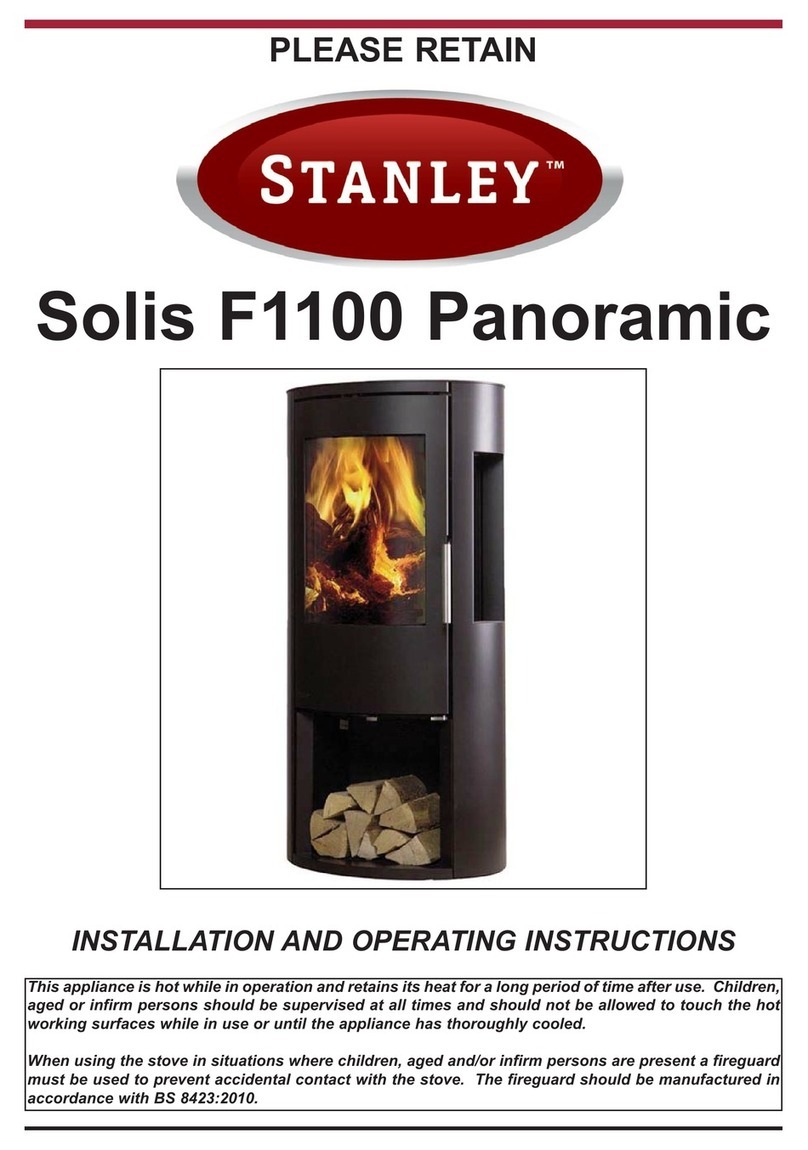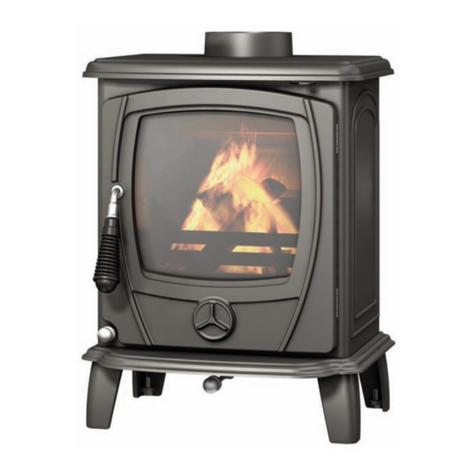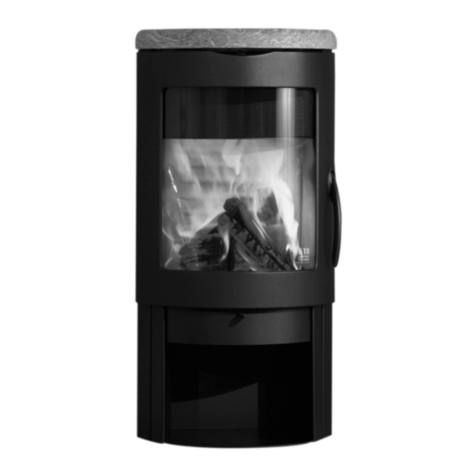Stanley Solis I60 User manual

Solis I60 Single Sided
Woodburner Insert
INSTALLATION AND OPERATING INSTRUCTIONS
This appliance is hot while in operation and retains its heat for a long period of time after use. Children,
aged or infirm persons should e supervised at all times and should not e allowed to touch the hot
working surfaces while in use or until the appliance has thoroughly cooled.
When using the stove in situations where children, aged and/or infirm persons are present a fireguard
must e used to prevent accidental contact with the stove. The fireguard should e manufactured in
accordance with BS 8423:2010.
PLEASE ETAIN

TABLE OF CONTENTS
PAGENO.
1. Stanley Stove Warranty . . . . . . . . . . . . . . . . . . . . . . . . . . . . . . . . . . . . . . . . . . . . . . . . . . . . . . . . . . . 3
2. nstallation Checklist . . . . . . . . . . . . . . . . . . . . . . . . . . . . . . . . . . . . . . . . . . . . . . . . . . . . . . . . . . . . . 4
3. mportant Operation/ Maintenance Notes . . . . . . . . . . . . . . . . . . . . . . . . . . . . . . . . . . . . . . . . . . . . . 5
4. nstallation & Operating nstructions . . . . . . . . . . . . . . . . . . . . . . . . . . . . . . . . . . . . . . . . . . . . . . . . . 6
5. General . . . . . . . . . . . . . . . . . . . . . . . . . . . . . . . . . . . . . . . . . . . . . . . . . . . . . . . . . . . . . . . . . . . . . . . 6
6. Electrical Supply . . . . . . . . . . . . . . . . . . . . . . . . . . . . . . . . . . . . . . . . . . . . . . . . . . . . . . . . . . . . . . . . 6
7. Flues . . . . . . . . . . . . . . . . . . . . . . . . . . . . . . . . . . . . . . . . . . . . . . . . . . . . . . . . . . . . . . . . . . . . . . . . . 6
8. Chimney . . . . . . . . . . . . . . . . . . . . . . . . . . . . . . . . . . . . . . . . . . . . . . . . . . . . . . . . . . . . . . . . . . . . . . 6
9. Fitting nstructions . . . . . . . . . . . . . . . . . . . . . . . . . . . . . . . . . . . . . . . . . . . . . . . . . . . . . . . . . . . . . . . 7
10. Down Draughts . . . . . . . . . . . . . . . . . . . . . . . . . . . . . . . . . . . . . . . . . . . . . . . . . . . . . . . . . . . . . . . . . 8
11. Ventilation & Combustion Air Requirements . . . . . . . . . . . . . . . . . . . . . . . . . . . . . . . . . . . . . . . . . . . 9
12. External Ducted Air . . . . . . . . . . . . . . . . . . . . . . . . . . . . . . . . . . . . . . . . . . . . . . . . . . . . . . . . . . . . . . 9
13. Heat Recovery Ventilation . . . . . . . . . . . . . . . . . . . . . . . . . . . . . . . . . . . . . . . . . . . . . . . . . . . . . . . . . 10
14. Location . . . . . . . . . . . . . . . . . . . . . . . . . . . . . . . . . . . . . . . . . . . . . . . . . . . . . . . . . . . . . . . . . . . . . . . 10
15. Clearance To Combustibles . . . . . . . . . . . . . . . . . . . . . . . . . . . . . . . . . . . . . . . . . . . . . . . . . . . . . . . 10
16. Floor Protection . . . . . . . . . . . . . . . . . . . . . . . . . . . . . . . . . . . . . . . . . . . . . . . . . . . . . . . . . . . . . . . . . 10
17. Warm Air Ducting System . . . . . . . . . . . . . . . . . . . . . . . . . . . . . . . . . . . . . . . . . . . . . . . . . . . . . . . . . 11
18. Position of Warm Air Duct . . . . . . . . . . . . . . . . . . . . . . . . . . . . . . . . . . . . . . . . . . . . . . . . . . . . . . . . . 11
19. Fitting the Warm Air Duct to the Stove . . . . . . . . . . . . . . . . . . . . . . . . . . . . . . . . . . . . . . . . . . . . . . . 11
20. Stove Dimensions . . . . . . . . . . . . . . . . . . . . . . . . . . . . . . . . . . . . . . . . . . . . . . . . . . . . . . . . . . . . . . . 12
21. Commissioning and Handover . . . . . . . . . . . . . . . . . . . . . . . . . . . . . . . . . . . . . . . . . . . . . . . . . . . . . 12
22. Operation . . . . . . . . . . . . . . . . . . . . . . . . . . . . . . . . . . . . . . . . . . . . . . . . . . . . . . . . . . . . . . . . . . . . . . 12
23. Air Controls . . . . . . . . . . . . . . . . . . . . . . . . . . . . . . . . . . . . . . . . . . . . . . . . . . . . . . . . . . . . . . . . . . . . 12
24. Recommended Fuels . . . . . . . . . . . . . . . . . . . . . . . . . . . . . . . . . . . . . . . . . . . . . . . . . . . . . . . . . . . . 13
25. Technical Data . . . . . . . . . . . . . . . . . . . . . . . . . . . . . . . . . . . . . . . . . . . . . . . . . . . . . . . . . . . . . . . . . . 13
26. Lighting . . . . . . . . . . . . . . . . . . . . . . . . . . . . . . . . . . . . . . . . . . . . . . . . . . . . . . . . . . . . . . . . . . . . . . . 14
27. Lighting The Stove . . . . . . . . . . . . . . . . . . . . . . . . . . . . . . . . . . . . . . . . . . . . . . . . . . . . . . . . . . . . . . 14
28. Refuelling . . . . . . . . . . . . . . . . . . . . . . . . . . . . . . . . . . . . . . . . . . . . . . . . . . . . . . . . . . . . . . . . . . . . . 14
29. Slow Burning . . . . . . . . . . . . . . . . . . . . . . . . . . . . . . . . . . . . . . . . . . . . . . . . . . . . . . . . . . . . . . . . . . . 14
30. Disposal of Ashes . . . . . . . . . . . . . . . . . . . . . . . . . . . . . . . . . . . . . . . . . . . . . . . . . . . . . . . . . . . . . . . 14
31. Monthly Maintenance . . . . . . . . . . . . . . . . . . . . . . . . . . . . . . . . . . . . . . . . . . . . . . . . . . . . . . . . . . . . 14
32. Periodic Maintenance . . . . . . . . . . . . . . . . . . . . . . . . . . . . . . . . . . . . . . . . . . . . . . . . . . . . . . . . . . . . 15
33. Chimney Cleaning . . . . . . . . . . . . . . . . . . . . . . . . . . . . . . . . . . . . . . . . . . . . . . . . . . . . . . . . . . . . . . 15
34. Prolonged Periods of Non Use . . . . . . . . . . . . . . . . . . . . . . . . . . . . . . . . . . . . . . . . . . . . . . . . . . . . . 15
35. Fire Safety . . . . . . . . . . . . . . . . . . . . . . . . . . . . . . . . . . . . . . . . . . . . . . . . . . . . . . . . . . . . . . . . . . . . . 15
36. Glass Replacement . . . . . . . . . . . . . . . . . . . . . . . . . . . . . . . . . . . . . . . . . . . . . . . . . . . . . . . . . . . . . . 15
37. Glass Cleaning . . . . . . . . . . . . . . . . . . . . . . . . . . . . . . . . . . . . . . . . . . . . . . . . . . . . . . . . . . . . . . . . . 15
38. Main Exploded View . . . . . . . . . . . . . . . . . . . . . . . . . . . . . . . . . . . . . . . . . . . . . . . . . . . . . . . . . . . . 16
39. Door Exploded View . . . . . . . . . . . . . . . . . . . . . . . . . . . . . . . . . . . . . . . . . . . . . . . . . . . . . . . . . . . . 17
40. CO Alarm . . . . . . . . . . . . . . . . . . . . . . . . . . . . . . . . . . . . . . . . . . . . . . . . . . . . . . . . . . . . . . . . . . . . . . 18
41. Energy Label . . . . . . . . . . . . . . . . . . . . . . . . . . . . . . . . . . . . . . . . . . . . . . . . . . . . . . . . . . . . . . . . . . . 19
2

3
STANLEY STOVE WA ANTY
CONDITIONS OF WA ANTY
Your Stanley Stove is guaranteed against any part that fails (under normal operating conditions) as detailed in the fol-
lowing table with timelines specified from the date of installation of the appliance. f the unit is not installed within six
months of date of purchase, the warranty will commence six months from the date of purchase.
Warranty Period Parts Covered (Parts & Labour unless Stated)
Up to 1 Year • Refractory materials (supply only)
• Rope seals, glass seals and cement seals.
• Surface Finish on Seno models.
• Grates and fire bars.
• Ceramic glass is covered for Thermal breakage (supply only).
• Rust (if reported before installation)
• Aesthetic Damage (provided reported on date of receipt)
Up to 5 Years • All external castings (excluding impact damage or damage caused by
overfiring). Pictures of damage must be submitted to WS Service
Department.
All warranty claims must be reported to the Waterford Stanley Service Department and must be submitted with the prod-
uct serial number (located on the underside of the ashpan), date of purchase, proof of purchase (if requested) and
details of the specific nature of the problem.
The warranty is given only to the original consumer/purchaser only and is non-transferable. The appliance must be
installed by a suitable qualified person and installed as per the requirements of the manual. Failure to comply with the
nstallation Requirements or Building Regulations will void your warranty. Waterford Stanley reserve the right to replace
any part due to manufacturing defect that fails within the warranty period under the terms of the warranty. The unit must
be used for normal domestic purposes only and in accordance with manufacturer's operation instructions.
LIMITS OF LIABILITY
The warranty does not cover:
* Special, incidental or consequential damages, injury to persons or Property, or any other consequential loss.
* Any issue caused by negligence, misuse, abuse or circumstances beyond Waterford Stanley’s control.
* Any issue with wear and tear, modification, alteration, or servicing by anyone other than an authorized service
engineer.
* nstallation and operational related problems such as draught related issues external to the stove, inadequate
venting or ventilation, excessive flue offsets, negative air pressure caused by insufficient burning of improper
fuel.
* Damage caused to the unit while in transit.
* Stress fractures on bricks.
* Rust on cast iron parts unless reported prior to unit being installed.
* Aesthetic damage, rust & missing parts on units purchased off display.
Note: Adequate clearance must be maintained around the appliance to ensure the ease of part removal in the possi-
ble event of their damage/failure. Waterford Stanley are not responsible for any costs incurred in the removal of items
installed in the vicinity of the appliance that have to be moved to facilitate a part replacement.

INSTALLATION CHECK LIST
Flue System
1. Minimum Flue Height of 4.6 metres (15 feet).
2. Appliance should be connected to a minimum of 1.8 metres (6 feet) of 150mm (6”) flue pipe.
3. Any horizontal flue run should not exceed 150mm (6”)
4. All flue pipework passing through walls must be sleeved & adequately insulated in line
with current Building Regulations.
5. Appliance should be connected to a chimney of less than 200mm (8”) in diameter
(otherwise the chimney must be lined with a 6” flue liner).
6. The chimney/ flue termination must be located in accordance with building regulations part J.
7. The chimney serving this appliance should not serve any other appliance.
8. Access should be provided to the chimney serving the appliance to allow for cleaning. (This
can be done through the stove).
9. t is a requirement by Building Regulations to have a carbon monoxide alarm
fitted to any room with a solid fuel appliance.
Loc tion
10. Clearance to combustible materials must be adhered to as described in the Clearance
to Combustible section.
11. The stove must be installed in a solid non combustible recess with a hearth or suitable non
combustible floor protector that extends 225mm to the front of the appliance and 150mm to
either side.
Ventil tion & Combustion Air Requirements
12. The room in which the appliance is located should have an air vent of adequate
size to support correct combustion (see Ventilation & Combustion Air Requirement
Section for specific details).
13. The stove must not be installed in the same room as an extractor fan.
Tick
4

IMPO TANT OPE ATION / MAINTENANCE NOTES
Now that your Stanley Woodburning Stove is installed and no doubt you are looking forward to the many com-
forts it will provide, we would like to give you some tips on how to get the best results from your stove.
1. We would like if you could take some time to read the operating instructions/hints, which we are
confident, will be of great benefit to you.
2. Do not burn fuel with a high moisture content, such as a damp or unseasoned timber. This will only
result in a build up of tar in the stove and in the chimney.
3. IMPO TANT:The first few fires should be relatively small to permit the refractory to set properly and
season the stove. During these firings it is recommended to ventilate the room as an unpleasant
(not toxic) odour may be emitted as the paint is completing curement.
4. Inspect the flue-ways of the stove weekly and ensure that there are no blockages. Check flue
ways before lighting especially after a shut down period. Please see chimney cleaning section.
5. Never allow a build up of ashes in the ash pan, as this will cause the grate to burn out prematurely.
6. Avoid slow burning of damp or unseasoned timber as this will result in tarring flue ways and chimney.
7. Allow adequate air ventilation to ensure plenty of air for combustion.
8. Do not burn rubbish/household plastic.
9. Clean the chimney at least twice a year.
10. Regular cleaning of the glass will prevent permanent staining. Clean with soapy water when cool.
11. Keep all combustible materials a safe distance away from unit, please see section for clearances
to combustibles.
12. Never use aerosol spray near the appliance when it is in operation.
13. For safety reasons never leave children or the elderly unaccompanied while stove is in use.
14. Avoid contact with the appliance when in use as the stove reaches very high operating temperatures.
15. This appliance should be regularly maintained by a competent service engineer.
5

INSTALLATION & OPE ATING INST UCTIONS
GENE AL
When installing, operating and maintaining your
Solis stove, respect basic standards of fire safety.
Read these instructions carefully before commenc-
ing the installation. Failure to do so may result in
damage to persons and property. Consult your local
Municipal office and your insurance representative
to determine what regulations are in force. Save
these instructions for future reference.
Please note that it is a legal requirement under
England & Wales Building Regulations that the
installation of the stove is either carried out under
Local Authority Building Control approval or is
installed by a Competent Person registered with a
Government approved Competent Persons
Scheme. HETAS Ltd operate such a scheme and a
listing of their Registered Competent Persons can
be found on their website at www.hetas.co.uk.
Special care must be taken when installing the stove
such that the requirements of the Health & Safety at
Work Act are met.
Handling
Adequate facilities must be available for loading,
unloading and site handling.
Fire Cement
Some types of fire cement are caustic and should
not be allowed to come into contact with the skin. n
case of contact with the skin wash immediately with
plenty of water.
As estos
This stove contains no asbestos. f there is a possi-
bility of disturbing any asbestos in the course of
installation then please seek specialist guidance and
use appropriate protective equipment.
Metal Parts
When installing or servicing this stove care should
be taken to avoid the possibility of personal injury.
“IMPO TANT WA NING”
This stove must not be installed into a chimney that
serves any other heating appliance.
6
The complete installation must be done in accor-
dance with current Standards and Local Codes. t
should be noted that the requirements and these
publications may be superseded during the life of
this manual.
Ple se refer to the current st nd rds, BS EN 15287-
1:2007 Design, Inst ll tion nd Commissioning of
chimneys. BS EN 14336:2004: He ting Systems in
Buildings. Inst ll tion & Commissioning of W ter
B sed He ting Systems. BS EN 12828: 2003;
He ting Systems in Buildings. Design of W ter
B sed He ting Systems. BS EN 12831: 2003;
He ting Systems in Buildings. method for
c lcul tion of the design he t lo d.
Your Solis stove is supplied with the following items:
• Glove
• Operating Tool
• External Air Connection
• Warm Air Duct Spigot x 2
• Glass Frame x 1
FLUES
Flues should be vertical wherever possible and
where a bend is necessary, it should not make an
angle of more than 45owith the vertical. Horizontal
flue runs should be avoided in order to minimise flue
resistance and to make sweeping easier it is recom-
mended to use 2 x 45obends rather than a 90o
bend.
CHIMNEY
Do not connect to a chimney serving another
appliance.
The stove is a radiant room heater and must be con-
nected to a chimney of the proper size and type.
The chimney must have a cross-sectional area of at
least 28 square inches 17660sq. mm or a diameter
of at least 6” (150mm). t is best to connect to a
chimney of the same size, as connection to a larger
size may result in a somewhat less draught.
A flue that has proved to be unsatisfactory, particu-
larly with regard to down draught should not be used
for venting this appliance until it has been examined
and any faults corrected. An existing masonry chim-
ney should be inspected and if necessary repaired
by a competent mason or relined using an approved
lining system.

7
The stove must be connected to a chimney with a
minimum continuous draught of 0.06” w.g. Poor
draught conditions will result in poor performance.
All register plates, restricter plates, damper etc.,
which could obstruct the flue at a future date should
be removed before connecting this appliance.
f connecting to an existing chimney with a flue
diameter of more that 8” it is recommend to line the
flue using a suitable stainless steel flue liner, of min-
imum diameter 6”/150mm .
Where a masonry chimney is not available a propri-
etary type of 6”/150mm - twin wall, fully insulated
pipe may be used. The pipe must terminate at a
point not lower than the main ridge of adjacent out-
side obstructions. With such installation, access to
the chimney must be provided for cleaning purpos-
es.
A chimney / flue termination must be located to min-
imise wind effects, a basic guide is that the distance
from the termination to the roof should be at least
2300mm when measured horizontally and at least
1000mm when measured vertically, (see Fig.1). n
circumstances where there are adjoining buildings/
structures/ roof openings there are additional
requirements, please refer to building regulations
part J.
Fig.1
FITTING INST UCTIONS
The stove is designed to allow the chimney be
cleaned through the stove.
Step 1
Ensure the opening is suitable for fitting of the stove.
(See Fig. 2)
Note:
The opening will depend on the framer being fitted to
the stove
Fig.2
Step 2
Ensure the area on which the stove will be seated is
level.
Step 3
Ensure that access is available to fit the flue spigot,
flue adaptor and flue connection pipes subsequent
to fitting the unit in its final position. To achieve this
it may be necessary to fit an inspection hatch in the
chimney structure above or to the side of the unit.
Step 4
Fit the stove in position so that the back of the glass
frame is flush with the wall.
Step 5
Complete the flue installation sealing all joints with
appropriate fire cement.
2300
1000
A
BC

8
DOWN D AUGHTS
However well designed constructed and positioned,
the satisfactory performance of the flue can be
adversely affected by down draught caused by near-
by hills, adjacent tall buildings or trees. These can
deflect wind to blow directly down the flue or create
a zone of low pressure over the terminal.
A suitable terminal or cowl will usually effectively
combat direct down blow but no cowl is likely to pre-
vent down draught due to a low pressure zone.
(See Fig.7).
Fig.7
Direction of wind
Pressure zone
Direction of wind
Suction zone
Pressure zone
Direction of wind
Suction zone
Pressure zone Suction zone
Step 7
Fit the glass frame onto the body of the unit & secure
in place using the self tapping screws (see Fig. 6).
NOTE: THE FRAME MUST NOT BE
RECESSED NTO THE WALL AS
CLEARANCE S REQU RED TO
ALLOW FOR THE A R NTAKE FOR
THE VENT LAT ON FANS.
Fig.6
Step 8
Refit the fire door.
Fig.3
L FT DOOR TO RELEASE
FROM BOTTOM H NGE
Step 6
Remove the fire door by opening the door approx 60
degrees & lifting it up to detach from the bottom
hinge (see Fig. 3).

VENTILATION & COMBUSTION AI EQUI E-
MENTS
t is imperative that there is sufficient air supply to
the stove in order to support correct combustion.
The air supply to this appliance must comply with
current Building Regulations Part J, Heat Providing
Appliances. f another appliance is fitted in an adja-
cent room it will be necessary to calculate an addi-
tional air supply.
550mm² per each kw of rated output above 5kw
should be provided, where a flue draught stabiliser is
used the total free area shall be increased by an
additional 300mm² for each kw of rated output.
Note:
There must not be an extractor fan fitted in the same
room as the stove as this can cause the stove to
emit smoke and fumes into the room.
All materials used in the manufacture of air vents
should be such that the vent is dimensionally stable,
corrosion resistant, and no provision for closure.
The effective free area of any vent should be ascer-
tained before installation. The effect of any grills
should be allowed for when determining the effective
free area of any vent.
Air vents should be positioned so that they are not
liable to blockage.
Air vents direct to the outside of the building should
be located so that any air current produced will not
pass through normally occupied areas of the room.
An air vent outside the building should not be locat-
ed less than the dimensions specified within the
Building Regulations and B.S. 8303: Part 1 from any
part of any flue terminal. These air vents must also
be satisfactorily fire proofed as per Building
Regulations and B.S. 8303: Part 1.
Air vents in internal walls should not communicate
with bedrooms, bedsits, toilets, bathrooms or rooms
containing a shower.
Air vents traversing cavity walls should include a
continuous duct across the cavity. The duct should
be installed in such a manner as not to impair the
weather resistance of the cavity.
Joints between air vents and outside walls should be
sealed to prevent the ingress of moisture. Existing
air vents should be of the correct size and unob-
structed for the appliance in use.
f there is an extraction fan fitted in adjacent rooms
where this appliance is fitted, additional air vents
may be required to alleviate the possibility of
spillage of products of combustion from the appli-
ance/flue while the fan is in operation. Refer to B.S.
8303 Part 1.
Where such an installation exists, a test for spillage
should be made with the fan or fans and other appli-
ances using air in operation at full rate, (i.e.extraction
fans, tumble dryers) with all external doors and win-
dows closed.
f spillage occurs following the above operation, an
additional air vent of sufficient size to prevent this
occurrence should be installed.
Especially Airtight Properties:-
f the stove is being fitted in a property where the
design air permeability is less than 5m3/ (h.m2) (nor-
mally newer properties built from 2006), then a per-
manent ventilation must be fitted to provide 550mm2
of ventilation for each kW of rated output. f a
draught stabiliser is also fitted then the requirement
is 850mm2per kW of rated output.
9
EXTE NAL DUCTED AI
Where required the combustion air supply can be
ducted from outside. The air supply can be taken
from the back or base of the stove (see Stove
Dimensions).
t is recommended to bring the air supply for the
stove into the house using a 4” pipe. Where the pipe
meets the outside wall make sure a vent cover is fit-
ted properly to ensure no rodents can enter via the
vent pipe.
The vent pipe should be located to prevent the
ingress of moisture and in a location where it will not
get blocked with leaves or any other debris. As wind
effects can create suction and pressure zones of
opposite sides of the dwelling it is recommended to
run the air vent from opposite poles (North, South,
East & West) of the dwelling and tee off for the air
supply to the stove. This should negate the effect of
suction and pressure zones. See Fig.8 for an illus-
tration of how the vent pipe should be configured.
‘HETAS product pprov l covers this ppli nce
when inst lled in ccord nce with the m nuf ctur-
er’s instructions nd relev nt st nd rds. As there is
currently no st nd rd for Ducted Combustion Air
Supply this does not f ll within the remit for HETAS
product pprov l. Responsibility for the specific tion
of this nd for ppropri te m nuf cturer’s instruc-
tions is c rried by the ppli nce m nuf cturer, s
llowed for under the Building Regul tions.’

LOCATION
There are several conditions to be considered in
selecting a location for your Solis stove.
a. Position in the area to be heated, central
locations are usually best.
b. Allowances for proper clearances to
combustibles.
c. Allowances for proper clearances for
maintenance work.
CLEA ANCES TO COMBUSTIBLES
This appliance must be installed in a recess and the
recess should not contain any combustible material.
Wood battens and plaster board should not be used
within the clearance to combustibles. The minimum
clearance to combustibles required is as follows:
From the Top 400mm
From the Sides 500mm
From the Front 1600mm
From the Back 200mm
Combustible Front - Floor Level 225mm
Combustible Side 500mm
10
Fig.9
HEAT ECOVE Y VENTILATION
Where a stove is to be installed in a dwelling with
He t Recovery Ventil tion (HRV) a number of pre-
cautionary measures must be undertaken:
Where the product is to be installed with a
Mechanical Ventilation, the stove must be connect-
ed to an external air supply, The ductwork for the
external air supply must be no longer than 6 metres
and the air inlet terminal to the ductwork must have
a cross sectional area of at least 80cm2.
FLOO P OTECTION
t is recommended that the appliance is installed on
a solid, level, concrete base of non combustible
hearth conforming to the current Building
Regulations and must extend 225mm in front of the
appliance. This will provide protection from sparks
and embers which may fall out when stoking on refu-
elling.
Note: When Installing
outside air pipe adhere
to ‘Clearance to
Combustible’ Section.
Fig.8
4” ALUM N UM
FLEX BLE DUCT
P PE ENDS TO BE
COVERED W TH SU TABLE
A R NLET TERM NAL
4” OD CONNECTOR SADDLE
The area directly around the stove should not
be filled with insulation such as vermiculite. f
possible the area should be vented with two
vents at different levels to allow this area vent
into the room reducing the temperature in the
immediate vicinity of the stove.

11
Fig.10
WA M AI DUCTING SYSTEM
This appliance can be fitted to a Warm Air Ducting
System that will allow to distribute warm air to ele-
vated positions within the room or other parts of the
building.
All duct runs must always rise from the appliance
and be as straight as possible, with the minimum of
bends to ensure a good airflow. All ducts should be
suitably supported along the full length.
f the appliance is installed in a property with a gas
appliance fitted consideration should be given to the
ventilation air requirements of the gas appliance,
and an assessment made by a suitably trained and
appropriately qualified gas engineer.
Ducts must not be connected to areas designated as
a protected stairway as defined by the Local Building
Regulations.
Where ducts pass through walls or ceilings they
must be adequately supported and the space
around them filled with suitable non-combustible
filler.
t is recommended to fit a CO alarm in the area
where the ducts exit in addition to the one required
to be placed in the room with the appliance.
POSITIONING OF THE WA M AI DUCT
The following must be adhered to when locating the
warm air duct system:
* The air duct must not touch any combustible
materials within 550mm of the back of the
appliance.
* Take care when routing the duct to ensure it
is not deformed and restricting the airflow.
* Due to the possible high temperature of the
ducts, combustible material must be placed
no closer than 100mm to the surface. The
duct exits and grills must only be placed in a
non-combustible wall panel.
* Protect or place the exit ducts at a high level,
as the grill surfaces can become very hot
when in use.
* Use a suitable guard if the exit is at low level
to prevent touching or obstruction.
* Do not place combustible items near the
operating duct exit.
FITTING THE WA M AI DUCTS TO STOVE
1. Remove the cover plates on the top of the
firebox.
2. Fit the warm air duct spigots to the top of the
firebox using self tapping screws (see Fig
11).
3. Position the vents as advised in the previous
section.
4. Fit the flexible pipe to the spigots & vents and
secure with the clamp bands.
Fig.11
WA M AI DUCT SPIGOTS
500
500
Note,
Warm air ducting on this model will be
much less effective than on the Solis 80
model which has circulation fans.

12
COMMISSIONING AND HANDOVE
On completion of the installation allow a suitable
period of time for any fire cement and mortar to dry
out, when a small fire may be lit and checked to
ensure the smoke and fumes are taken from the
stove up the chimney and emitted safely to the
atmosphere. Do not run at full output for at least
24 hours.
Ensure that the operating instructions for the stove
are left with the customer. Ensure to advise the cus-
tomer on the correct use of the appliance and warn
them to use only Wood.
Advise the user what to do should smoke or fumes
be emitted from the stove. The customer should be
warned to use a fireguard to BS 8432: 2010 in the
presence of children, aged and/or infirm persons.
AI CONT OLS
The Solis Stove has two independent air controls
(See Fig. 12)
1. The primary air control lever located under
the fire door. Push right to open and left to
close.
2. The secondary air control lever is the lever
located above the fire door. Push right
to open and left to close.
Note: The controls may be hot when the stove is in
operation, use the tool provided to adjust
the controls when the stove is hot.
STOVE DIMENSIONS
Note: Dimensions stated are in Centimetres unless otherwise stated and may be subject to a slight +/- variation.
Fig.12
OPE ATION
Check that all dampers and catches are operating
correctly and ensure that all flue connections are
thoroughly sealed.
1 Secondary air control.
2 Primary air control.
Solis 60 stove without frame.
External air nlet- A
Diameter 80mm
External Air Kit Optional extra.
Part code: AOSAVK T
cm

13
ECOMMENDED FUELS
All fuels should be stored under cover and kept
as dry as possible prior to use.
This appliance has been tested using seasoned
wood logs and ONLY WOOD LOGS, WITH A MOIS-
TU E PE CENTAGE OF LESS THAN 20%, MUST
BE USED IN THIS APPLIANCE.
Do not use fuels with a Petro-coke ingredient as this
may cause the grate to overheat, causing damage.
Reduced outputs will result when fuels of lower
calorific values are used. Never use gasoline or
gasoline type lantern fuel, kerosene, charcoal lighter
fluid or similar liquids to start or freshen up a fire in
this heater. Keep all such liquid well away from the
heater at all times. Operate the stove only with the
fuelling door closed except for re-fuelling.
TECHNICAL DATA
Nominal Output: (kW) 6.2 kW
Mean Flue Gas Temperature oC214
Typical refuelling intervals to obtain nominal outputs: 0.75 hrs
Fuel Load to achieve nominal power 1.2 Kg
Maximum Fuel load 1.8 Kg
CO at 13% O20.06%
Gross Weight 70 kg
Flue Outlet 150mm (6”)
Efficiency 81%
Flue Draught 12Pa
Log Size 550mm
Model
Energy
Efficiency
Class
Heat Output
to Room
Heat Output
to Water
Energy
Efficiency
ndex
Preferred
Fuel
Nominal
Heat
Output
Net
Efficiency
60SS A+6.2 N/A 108 Wood 6.2 81
Warning. – During the use of your stove or inset appliance, the high temperatures generated during
combustion and cooling down of the device afterwards will cause expansion and contraction of the
steel plates. This may cause some metallic sounds; these are completely normal and should not be
considered a defect in the product.

14
LIGHTING
Before lighting the stove check with the installer that
the installation work and commissioning checks
described previously have been carried out correct-
ly and that the chimney has been swept clean, is
sound and free from any obstructions. As part of the
stoves commissioning and handover the installer
should demonstrate how to operate the stove cor-
rectly.
LIGHTING THE STOVE
1. Open the fire door and open the primary &
secondary air inlets by pushing the two air
control levers to the right.
2. Cover the grate with crumpled pieces of
paper and lay 10-12 pieces of kindling on top
of the paper towards the back of the firebox.
3. lgnite and close the fire door.
4. When the kindling is well alight open the fire
door and add more kindling of a larger size to
sustain the fire. Close the fire door.
5. When a hot fire bed is established, close the
primary air inlet fully and add larger pieces of
wood.
6. When well lit, adjust the secondary air
control as required depending on the heat
output required. The exact settings will
depend on the draught conditions of the
chimney to which the unit is connected.
Depending on the quality of the firewood, it may be
necessary to open the primary air inlet to sustain the
desired burn rate, but during normal operation, the
primary air lever should not be opened by more than
10mm.
EFUELLING
Before opening the fire door, open the air controls
fully as this will help to eliminate any smoke or fly
ash resident in the combustion chamber. Open the
fire door slowly, add fuel to fire, close fire door and
re-set the air controls to the required setting.
SLOW BU NING
Slow burning will cause the window glass to blacken
and should not be used for a long period. t should
only be done after the fire has been established and
been running at nominal output for a period of time.
For a prolonged slow burn, fill the firebox of fuel up
to a maximum height just below the top of the fire
fence at the front of the door opening. Close the air
controls.
DISPOSAL OF ASHES
Your stove does not require an ashpan, best com-
bustion when burning wood is achieved on a bed of
ash. t is not required to empty all of the ash. f there
is excess ash( greater than 15mm) in the stove it
should be removed by when the stove is cold by
scooping it out or using a vacuum cleaner designed
for use with ash..
Ashes should be placed in a metal or other non-
combustible container with a tight fitting lid. The
closed container of ashes should be placed on a
non-combustible material, pending final disposal. f
ashes are buried in soil, or otherwise dumped they
should be retained in the closed container until they
are thoroughly cooled.
MONTHLY MAINTENANCE
Cle ning Stove Flue P thw ys
t is recommended that the flue pathways in the
stove are cleaned on a monthly basis (or less
depending on the soot build-up created by the fuel
being used) and the chimney cleaned annually. To
access the chimney pathways:
1. Remove the fire grate by lifting it up and out
of the firebox.
2. Remove one side plate by lifting the bottom
baffle and sliding the side brick towards the
centre while holding up the bottom baffle.
Remove the side brick tool followed by the
bottom baffle and then the remaining side
brick.
4. Bend the clips on the top baffle that protrude
through the front frame, ( otherwise front
edge cannot be lifted)
Then lift the baffle up, when the clips are
clear in front push the baffle back into the
stove where the re is adequate space to
manoeuvre for it to drop down into the fire
box so that it can be removed - see Fig 19.
TOP BAFFLE
CL PS
Fig.19

15
CHIMNEY CLEANING
The chimney should be cleaned twice annually or if
the stove is not used for a prolonged period during
the summer period, it should be cleaned prior to
commencement of usage. The chimney can be
cleaned through the stove depending on the flue
configuration and the flue liner should be cleaned in
accordance with manufacturer's instructions. Always
use a brush with plastic bristles that is the correct
size to reach all areas of the flue.
PE IODIC MAINTENANCE
Rope Se l Repl cement
Over time, the fire door latch can loosen due to the
continued compression and hardening of the seal
between the door and the front frame.
t is recommended that the rope seals are changed
at least every two years or sooner if the seal looses
its integrity.
GLASS CLEANING
The stove glass will self-clean when there is suffi-
cient heat generated by the burning fuel i.e. when
the unit is operated at the maximum air settings. f a
build-up of creosote occurs on the glass it may be
due to low draft conditions, poor quality fuel or oper-
ating the stove at the minimum air settings for long
periods of time. The glass should be cleaned when
cool and cleaned with a non-abrasive cloth using
warm soapy water. For stubborn deposits, a grade 0
steel wool can be used whilst taking care not to
scratch the glass with any coal/ash deposits.
P OLONGED PE IODS OF NON USE
f the stove is to be left unused for a prolonged peri-
od of time then it should be given a thorough clean
to remove ash and unburned fuel residues. To
enable a good flow of air through the appliance to
reduce condensation and subsequent damage,
leave the air controls fully open.
t is important that the flue connection, any appliance
baffles or throat plates and the chimney are swept
prior to lighting up after a prolonged shutdown peri-
od.
WA NING NOTE:
Properly installed, operated and maintained this
stove will not emit fumes into the dwelling.
Occasional fumes from the de-ashing and re-
fuelling may occur. However, persistent fume emis-
sion is potentially dangerous and must not be toler-
ated. f fume emission does persist, then the follow-
ing immediate action should be taken:
(a) Open doors and windows to ventilate room.
(b) Let the fire out or eject and safely dispose of
fuel from the stove.
(c) Check for flue or chimney blockage and clean if
required.
(d) Do not attempt to relight the fire until the cause
of the fume emission has been identified and
corrected. f necessary seek expert advice.
The most common cause of fume emission is flue-
way or chimney blockage. For your own safety
these must be kept clean at all times.
FI E SAFETY
To provide reasonable fire safety, the following
should be given serious consideration.
1. Do not over fire the stove.
2. Over-firing will also damage the painted finish.
3. nstall a smoke detector in the room.
4. A conveniently located class A fire extinguisher to
contend with small fires resulting from burning
embers.
5. A practical evacuation plan.
6. A plan to deal with a chimney fire as follows:-
(a) Notify the fire department.
(b) Prepare occupants for immediate evacua-
tion.
(c) Close all openings into the stove.
(d) While awaiting the fire department watch for
ignition to adjacent combustibles from over-
heated flue pipe or from embers or sparks
from the chimney.
GLASS EPLACEMENT
(a) Remove the fire door by opening the door
slightly & lifting it up to detach from the bottom
hinge.
(b) Remove the top glass retaining bracket by
loosening the two screws & nuts - see Fig 20.
(c) Remove the glass.
Fig 20
TOP GLASS RETA N NG
BRACKET F X NG SCREWS

EXPLODED VIEW
16
Item Code Description
03DEFSUPKR60 TOP BAFFLE
03ENTA R 60 REAR BR CK RETA NER
03BFKR60 GRATE
20DEFVER 60 BOTTOM VERM CUL TE BAFFLE
20LATVER Z 60 / 20LATVERDE 60 LEFT AND R GHT S DE VERM CUL TE BR CKS (full set)
20TRAVER 60 BACK VERM CUL TE BR CK (SET OF 2)

EXPLODEDVIEWDOO
17
Item Code Description
04PTA 160 DOOR
04MANT DOOR HANDLE
04K TMAN DOOR HANDLE F X NGS K T
04XJUNBB 60 DOOR ROPE BRACKET SET
20JBMD6L16 DOOR ROPE (per meter)
20CR 60DEK DOOR GLASS
04JUNDEK 60 DOOR GLASS F X NG BRACKET

18
CLEANING A MATT BLACK/SENOTHE M
STOVE
Cleaning should be done when the stove is cold by
removing any dust or dirt using a dry cloth. Do not
use any water on the matt black/senotherm finish as
this will cause it to rust.
CO ALA M
The fitting of CO Alarms in the same room as the
appliance is a compulsory requirement under cur-
rent Building Regulations. For RO an additional CO
Alarm must be fitted either inside each bedroom or
within 5 metres of the bedroom door, refer to
Building Regulations Part J. Further guidance on the
installation of a carbon monoxide alarm is available
in BS EN 50292:2002 and from the alarm manufac-
turers instructions.
Provision of an alarm must not be considered a
substitute for either installing the appliance
correctly or ensuring regular servicing and
maintenance of the appliance and chimney
system.
WA NING:-
If the CO Alarm sounds unexpectedly:-
1. Open Doors and windows to ventilate the
room and then leave the premises.
2. Let the fire go out.

19

Waterford Stanley Ltd.,
Unit 401-403, DA ndustrial Estate, Cork Road,
Waterford, reland.
www.waterfordstanley.com
ev: 001 NH 090621
20
Table of contents
Other Stanley Wood Stove manuals
Popular Wood Stove manuals by other brands

Harvia
Harvia CLASSIC 280 TOP Instructions for installation, use and maintenance
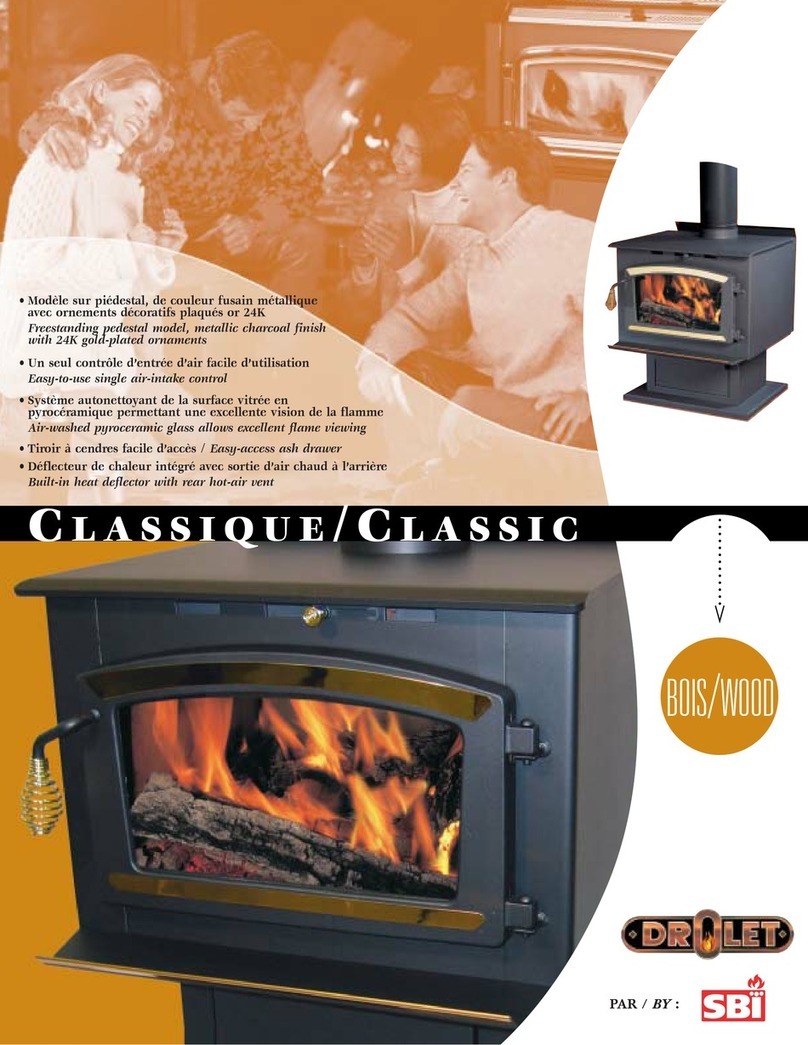
Drolet
Drolet Classic DB05345 Technical data

Panadero
Panadero TIGRU Usage and maintenance instructions
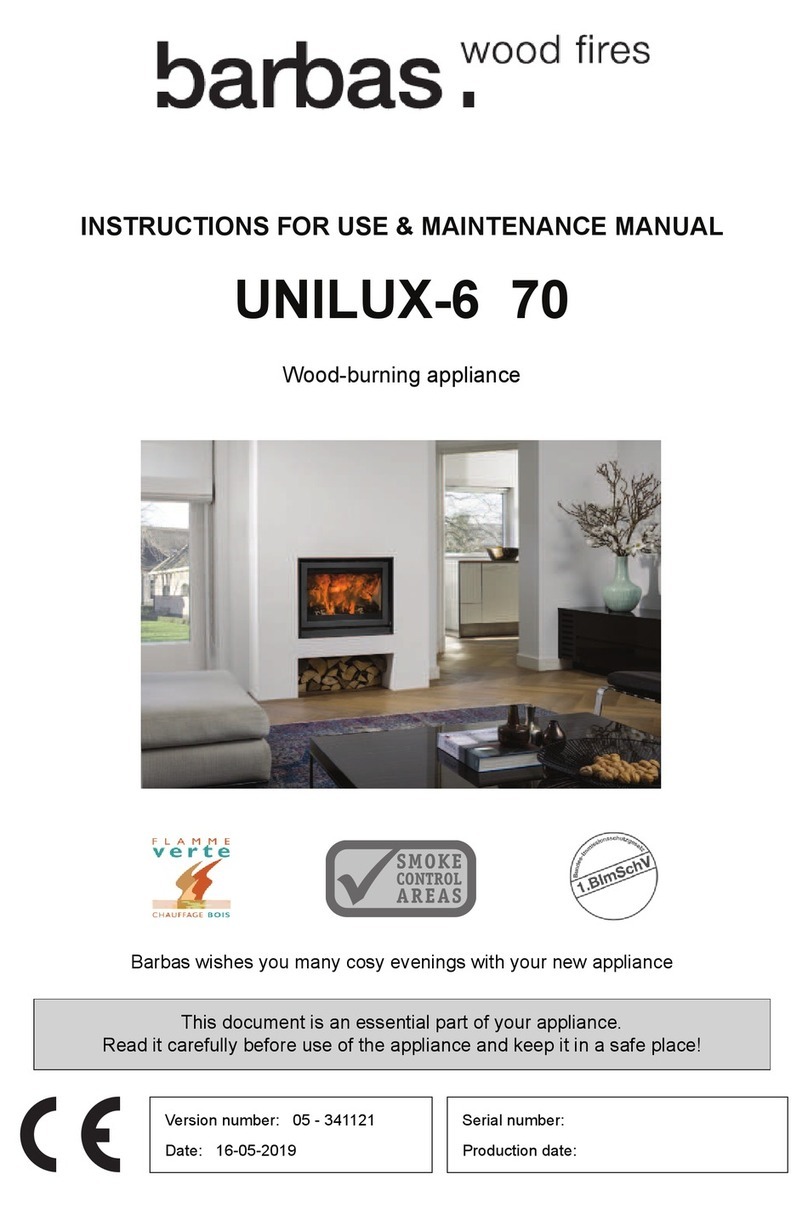
barbas
barbas UNILUX-6 70 Instructions for use & maintenance manual
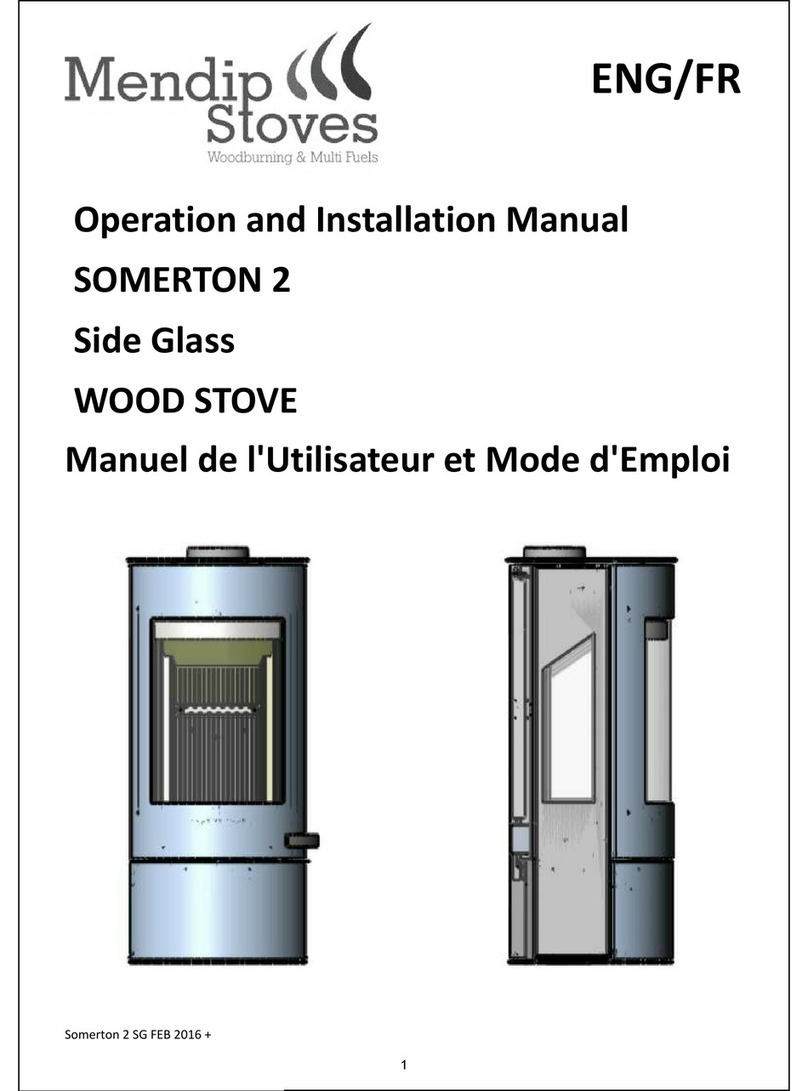
Mendip
Mendip SOMERTON 2 Pedestal Operation and installation manual
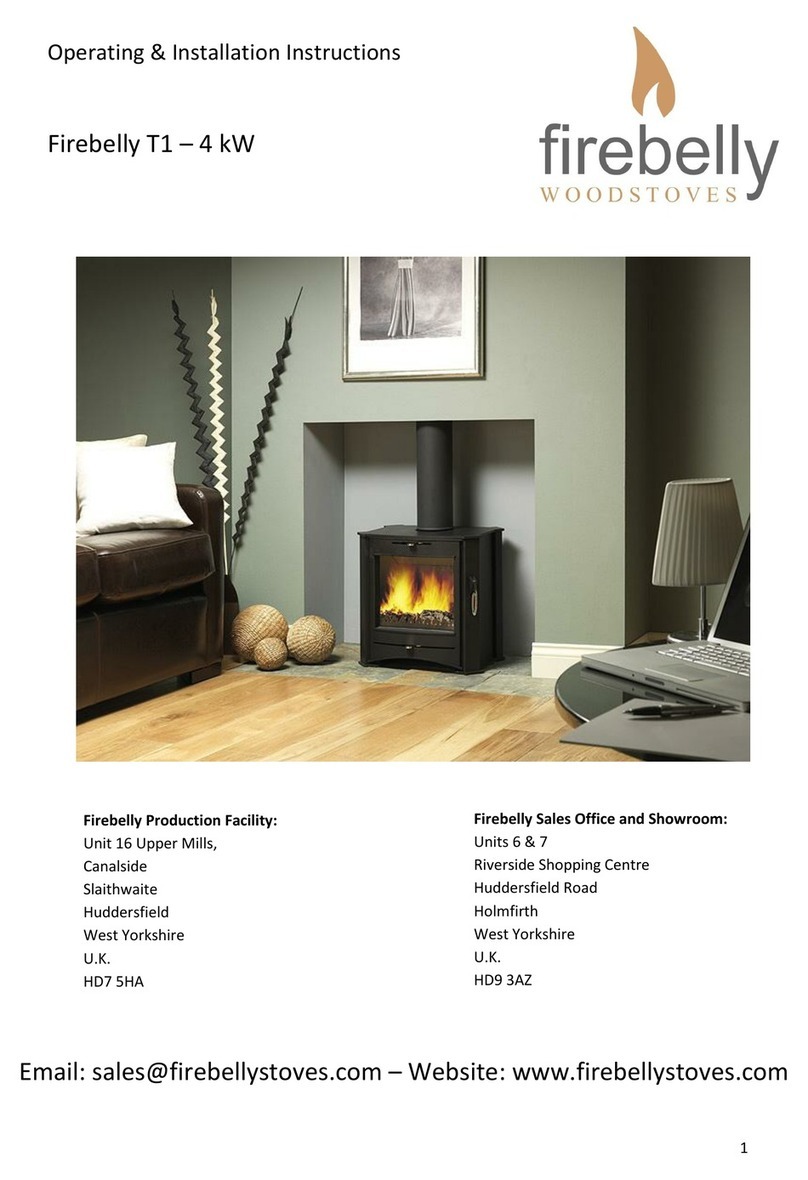
Firebelly
Firebelly T1 Operating & installation instructions

Jøtul
Jøtul 3 USA Installation and operating instructions
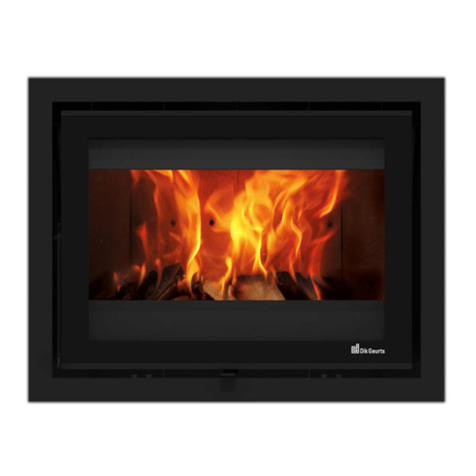
Dik Geurts
Dik Geurts Instyle 600V Next Instructions for installation

Enviro
Enviro 2100 Freestanding owner's manual
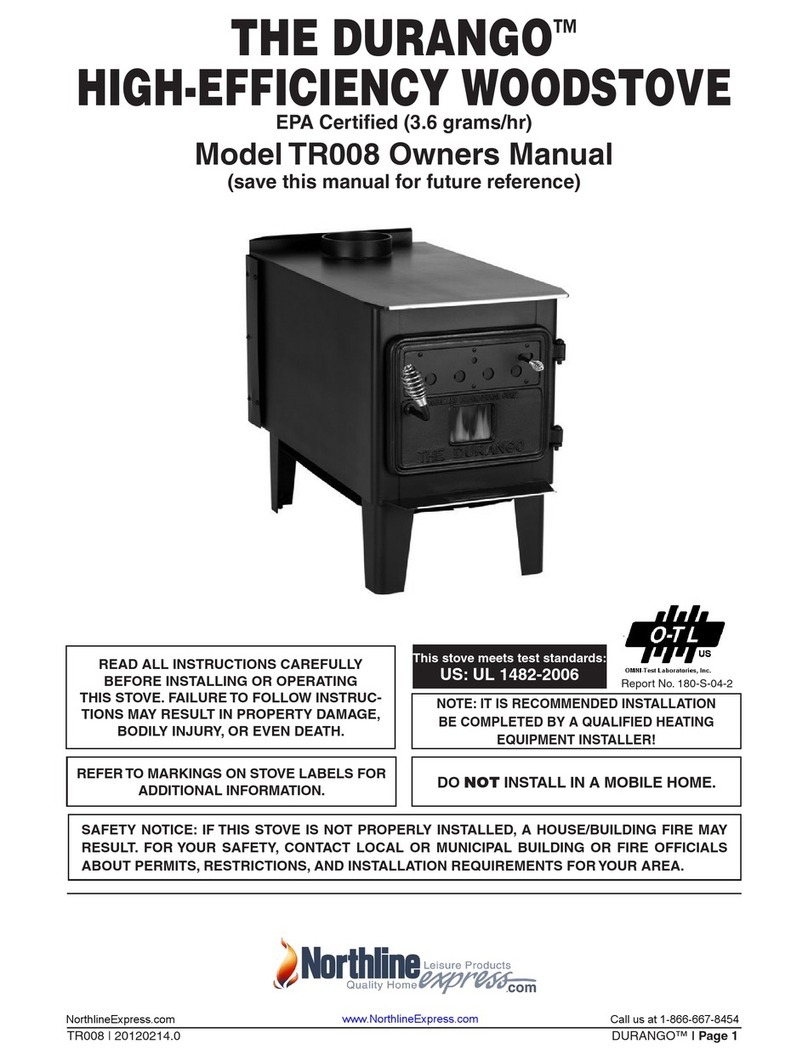
Northline Express
Northline Express DURANGO TR008 owner's manual
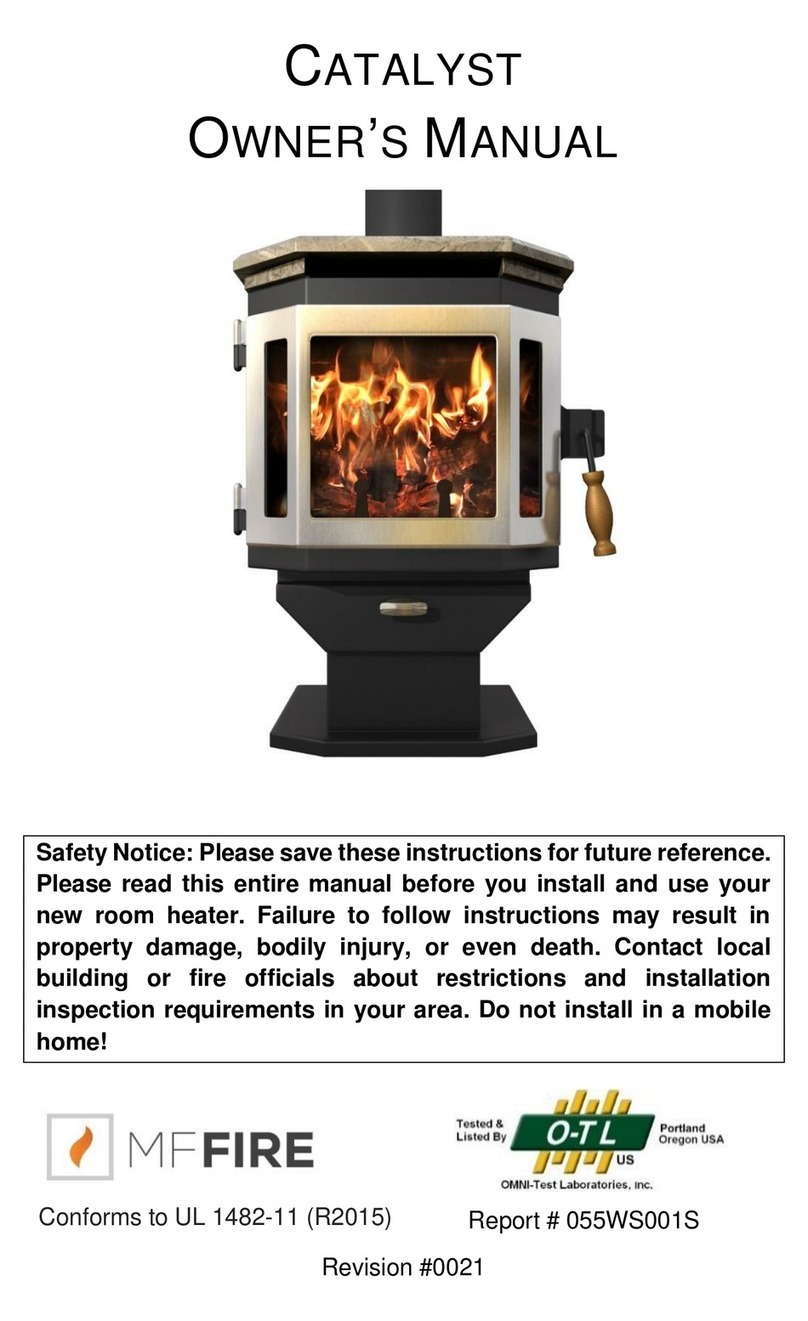
MF FIRE
MF FIRE CATALYST owner's manual
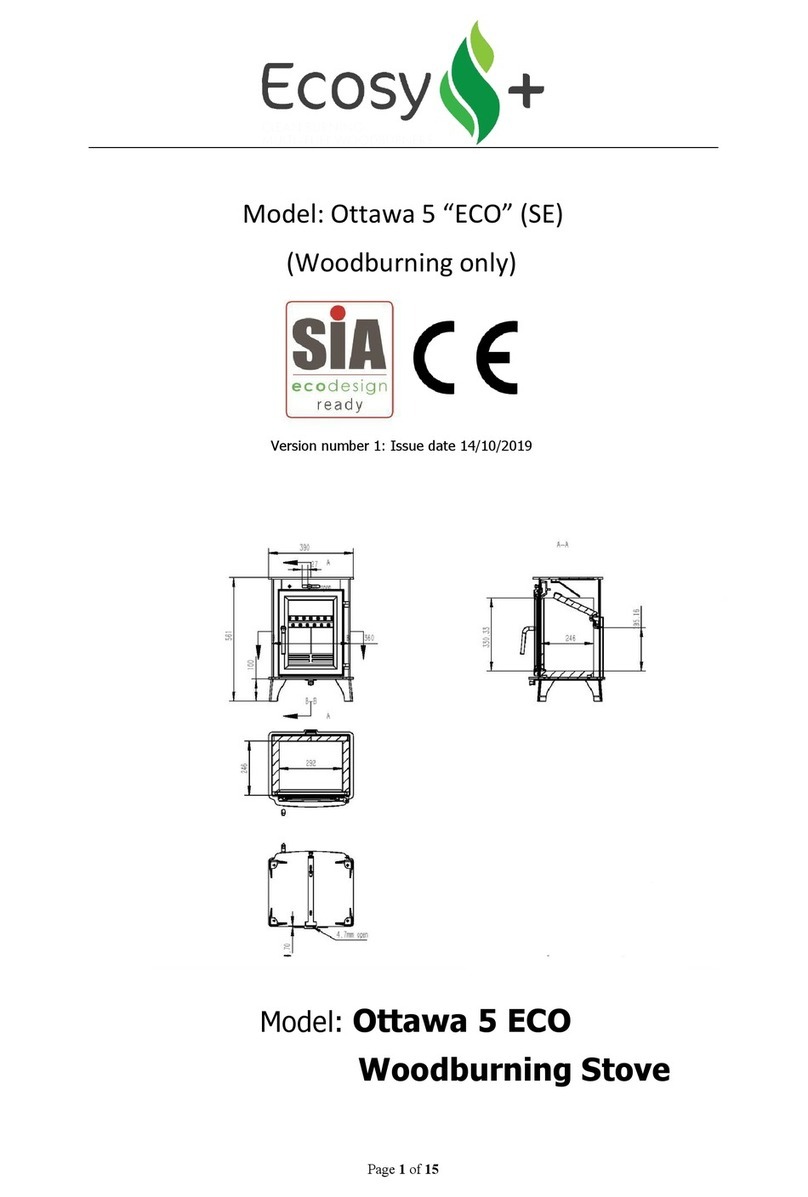
Ecosy+
Ecosy+ Ottawa 5 ECO quick start guide

